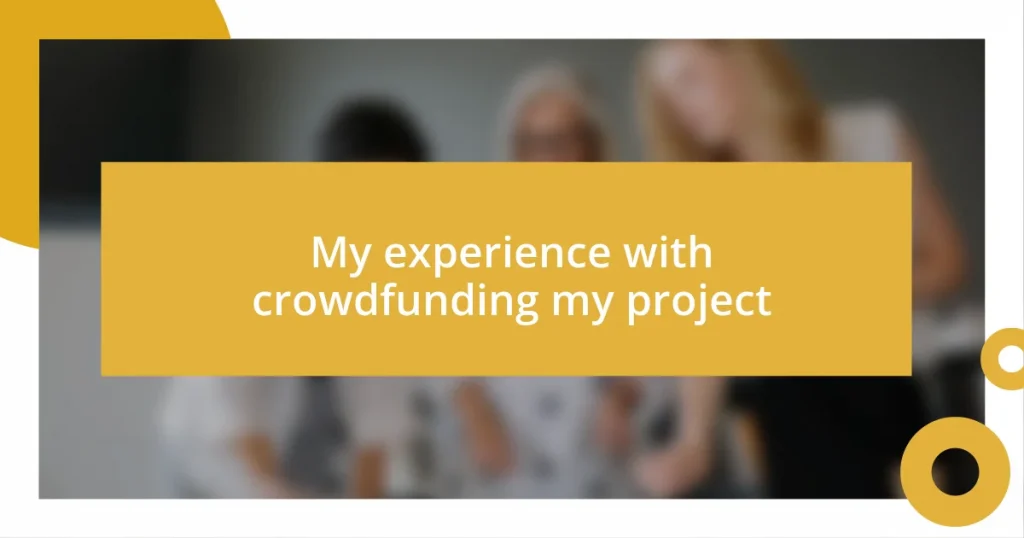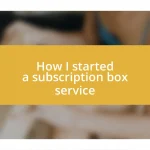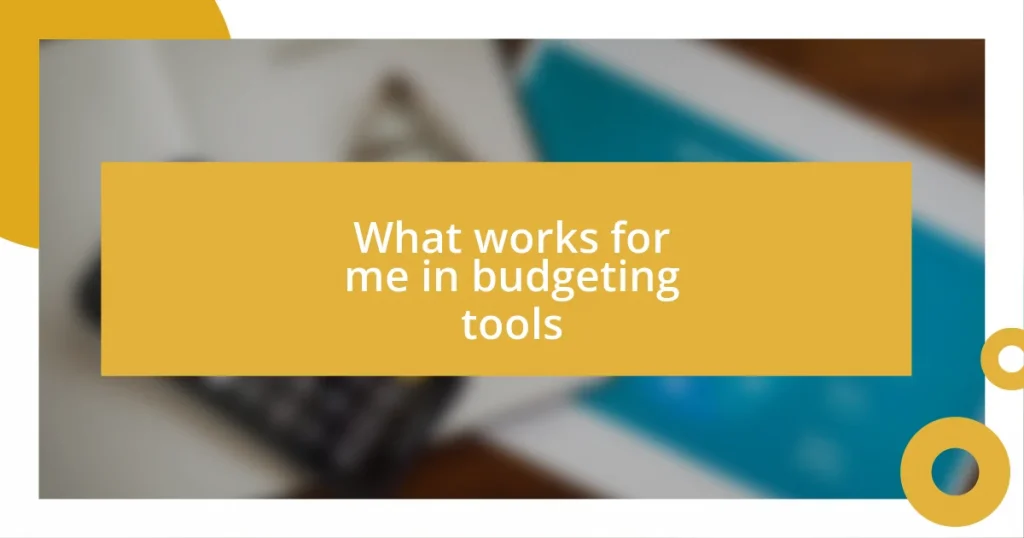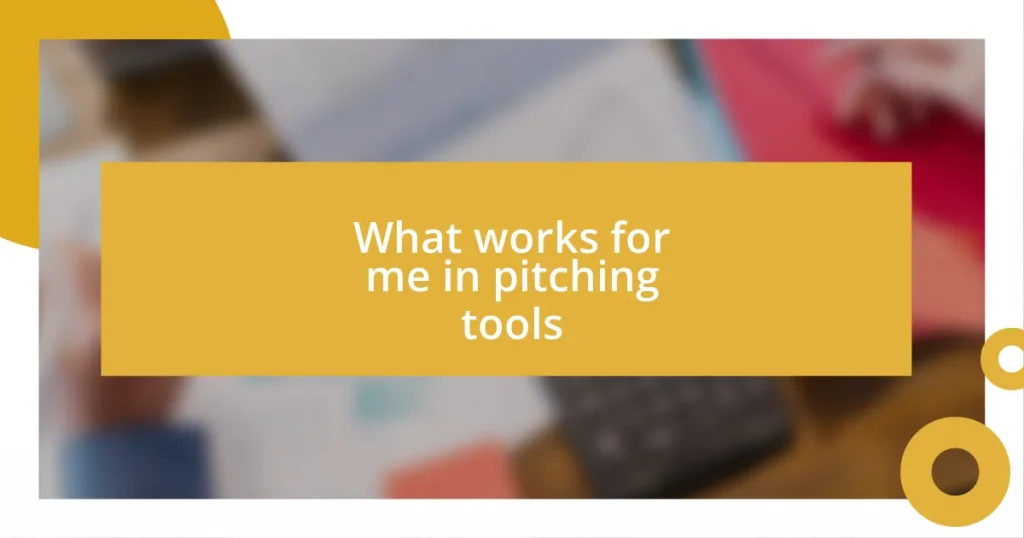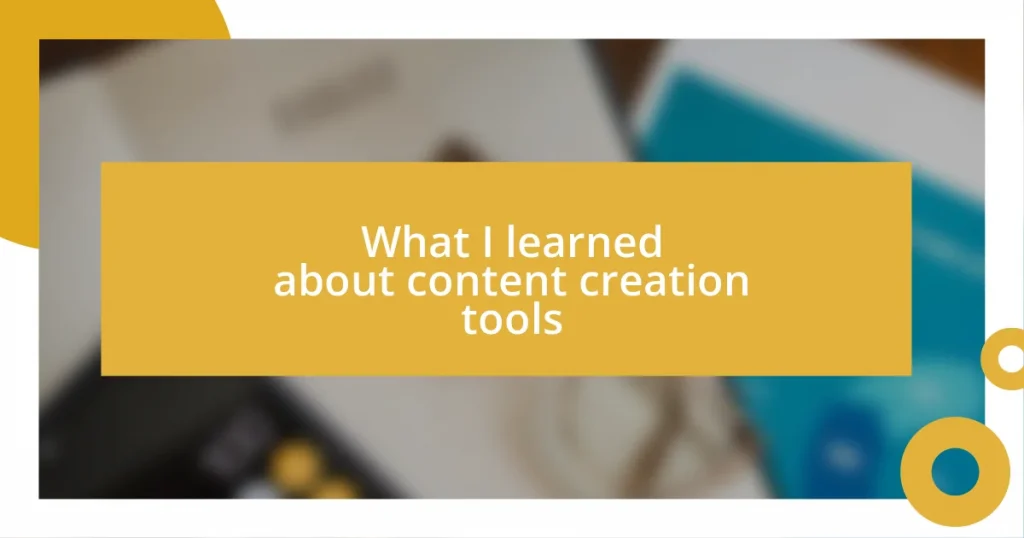Key takeaways:
- Understanding different crowdfunding types and choosing the right platform are crucial for project success.
- Setting realistic funding goals and engaging with your audience fosters community involvement and support.
- Leveraging social media effectively, including authentic engagement and strategic timing, can significantly enhance reach and promotion.

Understanding crowdfunding basics
Crowdfunding is essentially a way to gather financial backing for a project from a large number of people, typically through online platforms. I remember the rush of excitement I felt when my first project gained traction; it was like watching a small snowball grow into a mountain of support. Have you ever wondered how a simple idea can resonate with many, turning strangers into passionate backers?
At its core, crowdfunding is about creating a community around your project. I still vividly recall the heartfelt messages and encouragement from my supporters, which fueled my determination to push ahead. It’s fascinating how each pledge represents not just funding, but a vote of confidence in your vision.
Different types of crowdfunding exist, from rewards-based to equity-based, each with its own unique approach and audience. I learned the importance of choosing the right type for my project; it was the difference between getting a few small donations and having people genuinely invested in what I was trying to achieve. What type would resonate most with your potential backers? The answer can shape the entire outcome of your campaign.
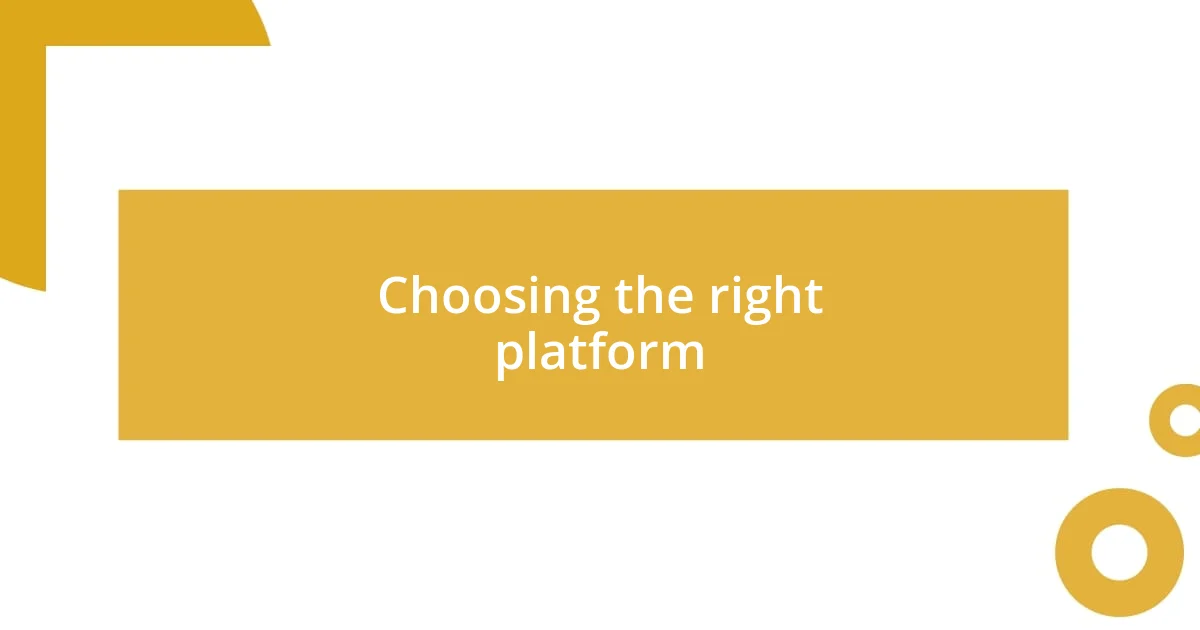
Choosing the right platform
Choosing the right crowdfunding platform can make or break your project. When I embarked on my crowdfunding journey, I took the time to compare platforms based on their fees, audience engagement, and campaign types. I was particularly drawn to those with an active community because I believed that interaction and enthusiasm could amplify my project’s reach. Have you explored how platform audiences align with your vision?
I remember getting overwhelmed by the sheer number of options available. Each platform has its nuances—some focus on creative projects, while others cater to tech innovations or charitable causes. I eventually settled on a platform that not only matched my project’s theme but also had robust support resources. What about you? Have you identified a platform that resonates with your goals and offers the support you need?
After careful consideration, I created a comparison table to clarify my options. Analyzing these factors helped me understand not just the financial implications, but the overall experience each platform could provide. The right choice truly felt like partnering with a team that believed in my vision just as much as I did.
| Platform | Type | Fees | Audience Size |
|---|---|---|---|
| Kickstarter | Rewards-based | 5% + payment processing | Large |
| Indiegogo | Flexible funding | 5% + payment processing | Medium |
| GoFundMe | Donation-based | No platform fee | Large |
| SeedInvest | Equity-based | 7.5% + payment processing | Small |
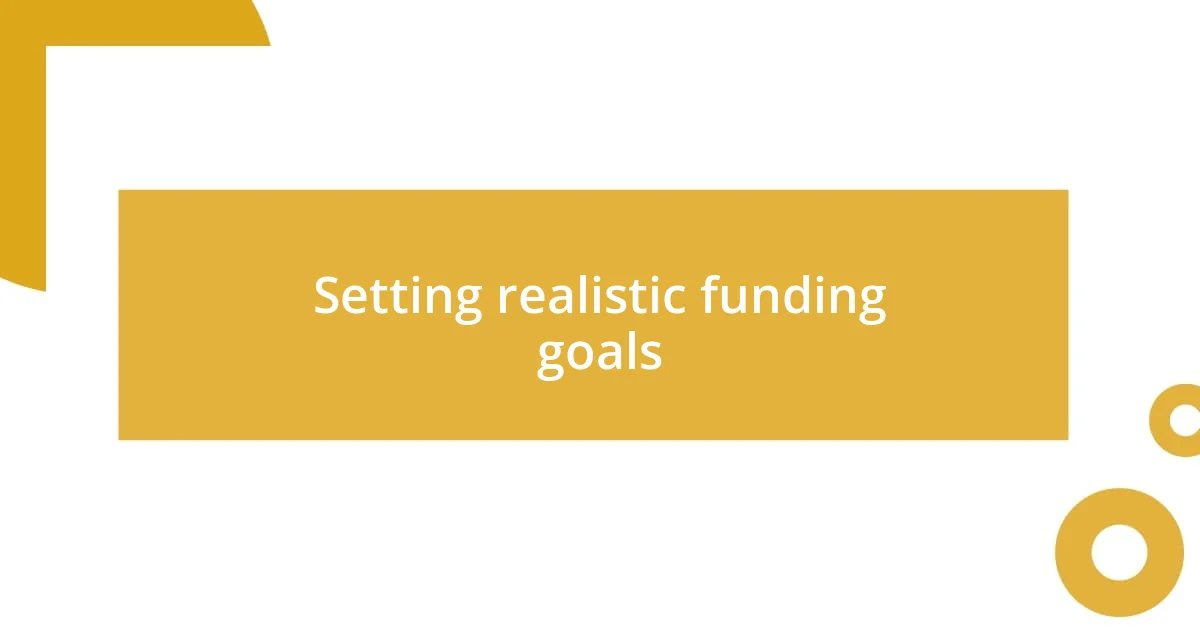
Setting realistic funding goals
Setting realistic funding goals is crucial for the success of your crowdfunding campaign. I remember when I first set my funding target; it felt daunting yet exhilarating. I was eager to dream big, but I quickly realized that aiming too high can lead to disappointment. It’s essential to strike a balance between ambition and achievability.
Here are some practical tips to help you set those goals:
- Research similar projects: Check out how much other campaigns in your niche raised and how they structured their funding goals.
- Break it down: Divide your overall goal into smaller milestones, making it easier to celebrate progress along the way.
- Consider costs: Factor in all expenses, including production, shipping, and platform fees, to ensure your target covers everything.
- Engage with your audience: Gather feedback from potential backers about what they would support; their insights can guide your goal-setting.
Even with these strategies, I encountered moments of self-doubt. Once, I raised my goal slightly after gaining momentum, only to feel an unexpected wave of anxiety. Would I let down my supporters if I fell short? But knowing I had done my homework and set achievable targets gave me the confidence to move forward. Don’t hesitate to adjust your goals as your campaign evolves; flexibility can be your greatest asset.
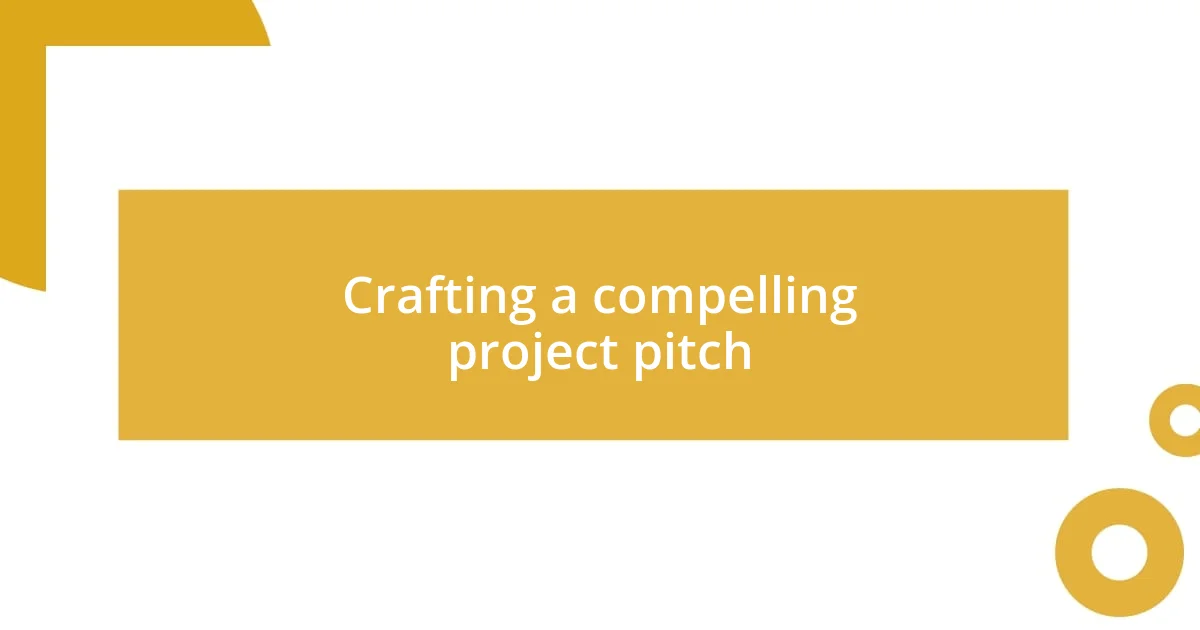
Crafting a compelling project pitch
Crafting a compelling project pitch is an art in itself. When I sat down to write mine, I made sure to infuse my passion into every word. It’s incredible how sharing your story with vulnerability can create a genuine connection with potential backers. Have you thought about what makes your project uniquely yours? Reflecting on my journey helped me articulate not just what my project was about, but why it mattered.
One strategy that proved invaluable was the power of visuals. I remember spending hours curating images and videos that captured the essence of my project. Those visuals acted as an emotional hook for my audience, effortlessly drawing them into my vision. Think about how powerful imagery can be in conveying your message—does your project have a visual story that’s waiting to be told?
As I refined my pitch, I realized the importance of clarity and brevity. I made sure to outline the key points in a straightforward manner, avoiding jargon that could alienate potential supporters. My experience taught me that if you don’t engage your audience quickly, they’re likely to wander off. How captivating is your pitch? It should evoke curiosity and excitement, making your audience eager to be part of your journey.
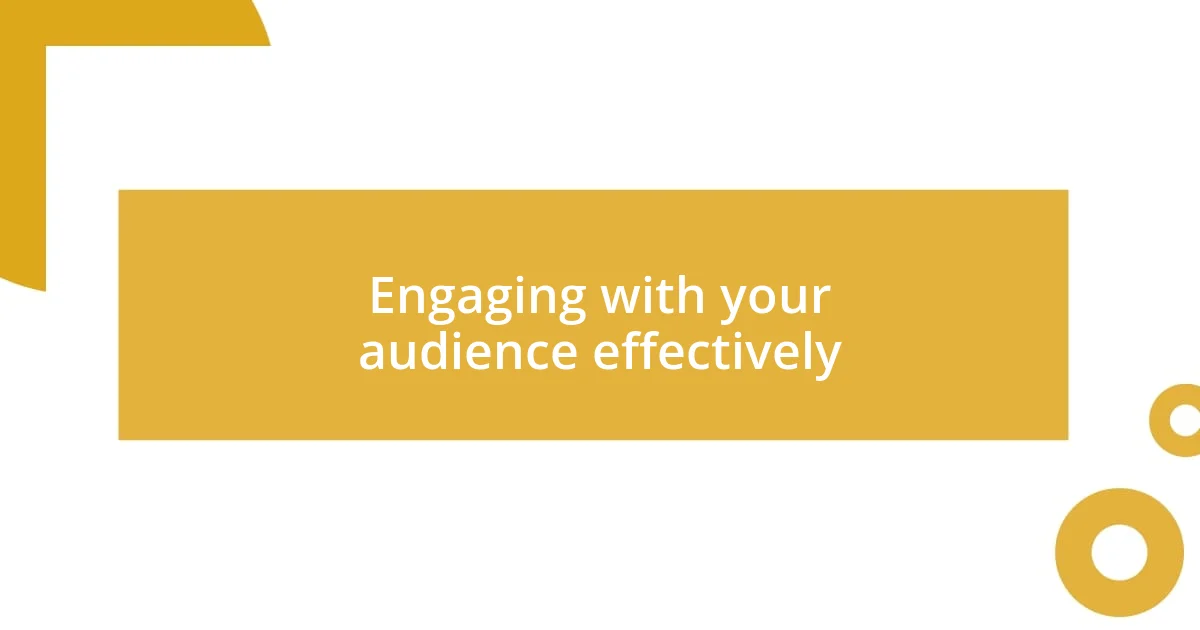
Engaging with your audience effectively
Engaging your audience effectively is all about creating a two-way conversation. I recall sharing my project updates on social media; it was amazing to see how a simple question, like “What do you think of this design?” sparked vibrant discussions. Those interactions not only built excitement but also fostered a sense of community around my project. Have you opened the floor to your audience yet? Their input can be invaluable, helping you tailor your approach and deepen that connection.
Another powerful approach I discovered was to share behind-the-scenes content. I used to feel intimidated by the thought of revealing the process—after all, who wants to risk showing their imperfections? But once I started sharing the ups and downs of my journey, it resonated with my audience in unexpected ways. They loved seeing the real side of crowdfunding, which made them feel personally invested in my project. How are you showcasing your journey?
I realized that sending personalized updates to backers is essential too. Each message I crafted felt like a mini-celebration, thanking supporters and updating them on our progress. It was remarkable to see how a simple “thank you” or sharing even the smallest milestones made my backers feel valued and involved. Are you acknowledging your supporters’ contributions? Every little effort builds trust and loyalty, and it’s those relationships that will carry your project beyond the crowdfunding stage.
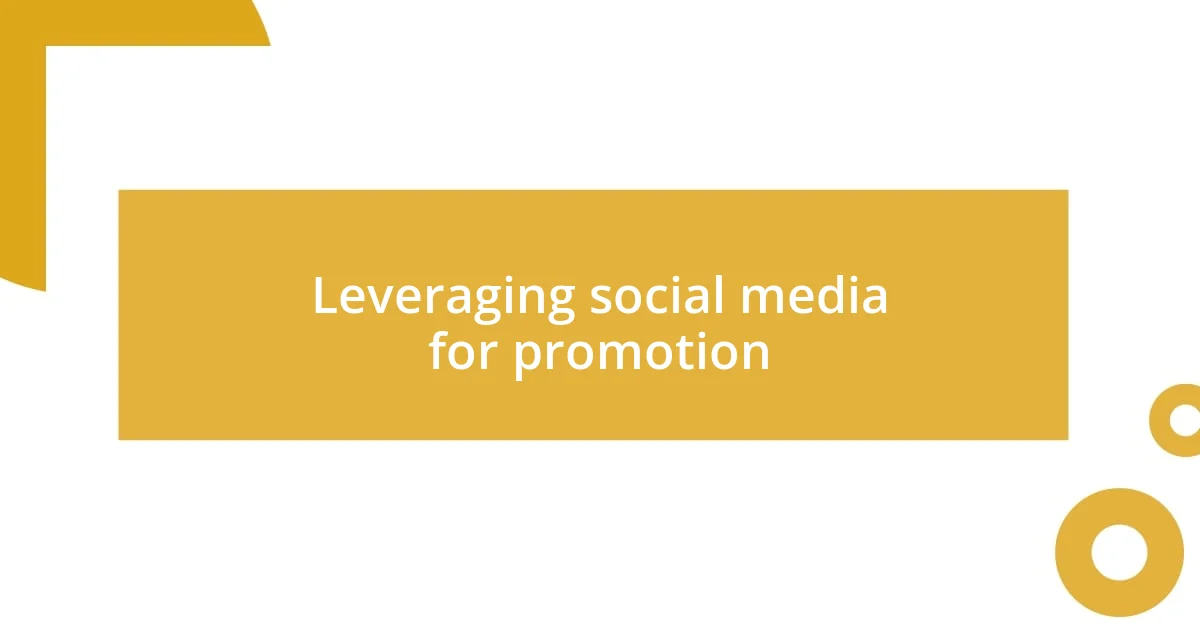
Leveraging social media for promotion
When I turned to social media for promotion, I quickly realized its potential to amplify my reach. One day, I posted a simple, heartfelt message about my project along with a video snippet, and the response was overwhelming. I couldn’t believe the number of shares and comments that flowed in—people genuinely connected with my vision. Have you considered how a personal touch in your posts can transform your audience’s engagement?
I also experimented with different platforms to see where my audience thrived. For example, Instagram became my favorite channel for updates, thanks to its visual nature. I shared progress photos, snapshots of my workspace, and even spontaneous moments of creativity. I’d never guess that one candid photo of me brainstorming would get more likes than any carefully curated post! It reinforced my belief that authenticity resonates—are you being your true self online?
As I navigated this landscape, I learned the importance of timing. I discovered that sharing updates during peak hours significantly boosted engagement. I remember posting a critical milestone late at night, only to wake up to a flurry of notifications. Reflections like this taught me the value of analytics; they’re not just numbers, but a roadmap to connect with the right people at the right time. Have you ever analyzed your posting strategy? It can uncover insights that propel your project forward.










